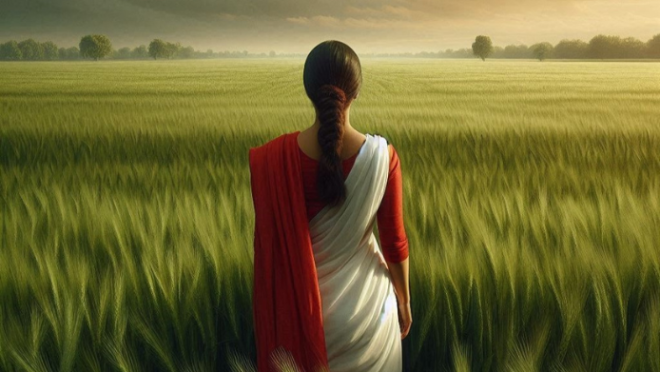International Mother Language Day: The story of Mother Bangla?
International Mother Language Day: The story of Mother Bangla?

If Bangla were a woman, she’d be a warrior-poet in a lush green field overlooking the Padma River. With eyes of fire and love, she would be clad in her red and white saree, while holding flowers in one hand and the other would be a clenched fist. But why is that? Why is Bangla both a beautiful woman and a warrior-queen?
The great beginnings
The roots of the Bangla language can be traced back to the Indo-Europeans and their proto language. From there it branched off to the Indo-Aryan language family. But these families are like the macro dynasties we have and any relatives that Bangla has from here are like that one cousin you never knew you had.
Vedic Sanskrit is where Bangla’s real family tree starts. The language of the Vedas, Sanskrit is where Bangla got a lot of her characteristics from. Like I got my height from my grandfather, this is a bit like that. But if Sanskrit is Bangla’s grandfather, her mother would be Magadhi Prakrit.
The language spoken in the courts of the Maurya Empire and Gautam Buddha himself, Magadhi Prakrit shapes Bangla as a mother teaches her child how to behave. Bangla’s structure, grammar, vocabulary and pronunciation can be attributed to Magadhi Prakrit. In this regard, Bangla’s modern-day siblings would be Odia, Assamese, Bhojpuri and its children would be its many dialects.
The poetry of the warrior
But where does the image of Bangla being a fierce warrior-poet come from? Well, as a relatively young language at only about 400 years old, Bangla has had to go through a lot in her childhood.
In her infancy, she was influenced by the invading Turko-Persian Muslims and the sweet Sufi songs brought on by them. Along with the already intellectual family of hers, which was used to write the Vedas, Bangla was brought up in a home where knowledge and beauty were at the forefront. From the myths and ‘puranas’ of the native Hindus to the Mughal courts, Bangla was flourishing but very soon her first rebellious phase emerged out of necessity.
As the colonizers landed on the shores of India, Bangla started to get influenced by them. But as the British took over in the 18th century, Bangla had to go on the backfoot. For about 200 years or so, Bangla literature had stagnated as she was caged by foreign powers. But soon that would change.
The Bangali renaissance coincided with the rise of nationalism in India. Raja Rammohon Rai started the fire. The fire was nourished by Ishwar Chandra Vidyasagar and reached its pinnacle through the works of Rabindranath Tagore. Kazi Nazrul Islam gave her the strength to fight against her oppressors while Begum Rokeya Sakhawat Hossain became a pioneer in breaking social stigmas. Through holding the hands of these great men and women, Bangla would become the warrior-poet she is now.
Love, death and immortality
Although Bangla didn’t directly lead India to independence in 1947, she would get her chance in 1971. We can only imagine the feelings Bangla felt when Mohammad Ali Jinnah declared Urdu to be the state language in 1952. Was it fury, wrath? Did her eyes have fire in them, a consequence of the rage built up inside of her? Or did they light up in determination and defiance? But one thing is for sure, there was no place for fear.
“These iron gates of prison,
Break them and destroy them,
Bloodied, heart-rending altars of shackles.”
-Kazi Nazrul Islam
Bangla is the language of the intellectuals and the fighters. We’re quite certain Miyamoto Musashi didn’t visualise Bangla when he said, “It is better to be a warrior in a garden, than a gardener in war.”
But that is what this language is. A warrior in a garden, a fighter in a lush green field overlooking the horizon.


